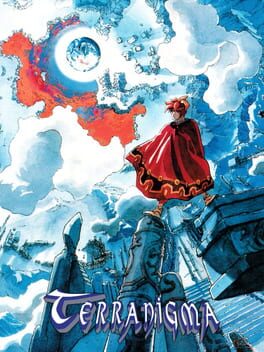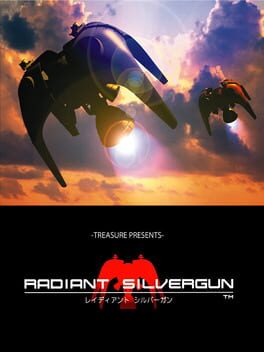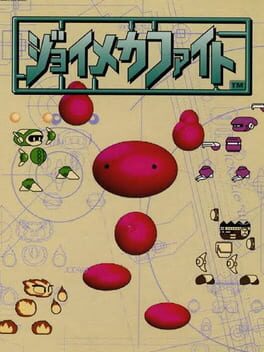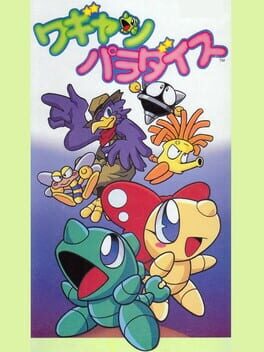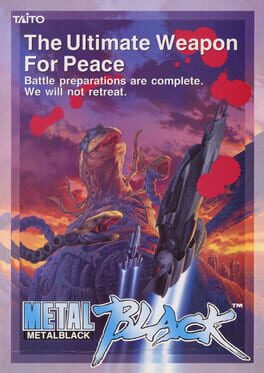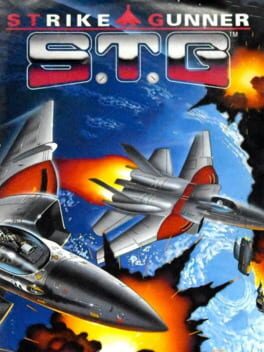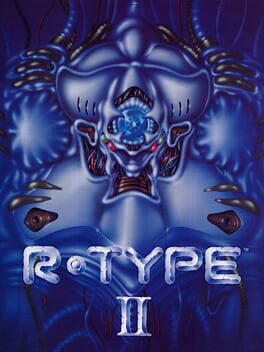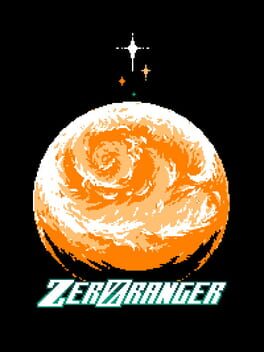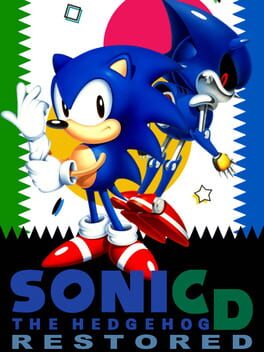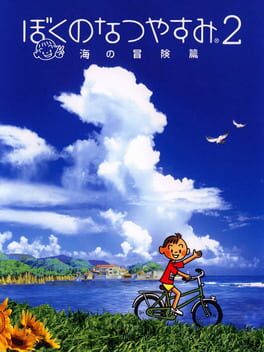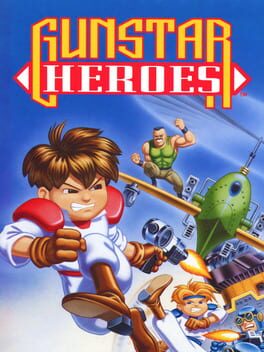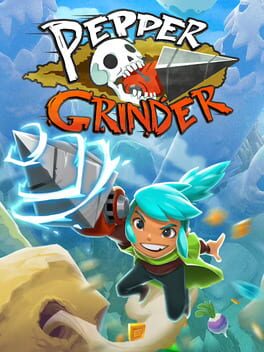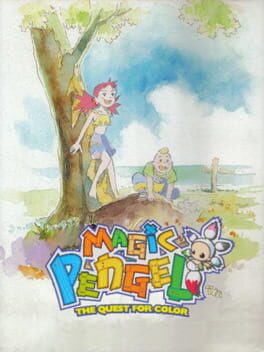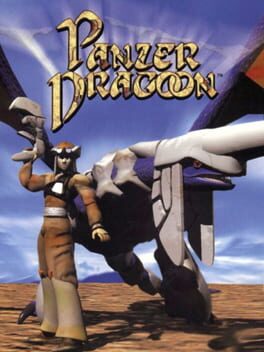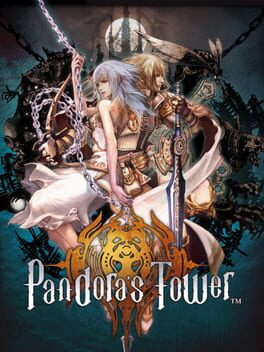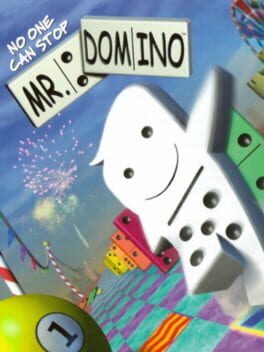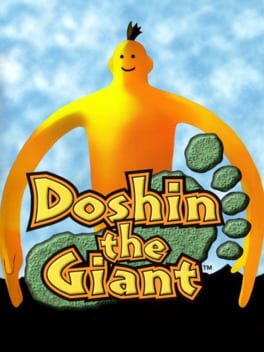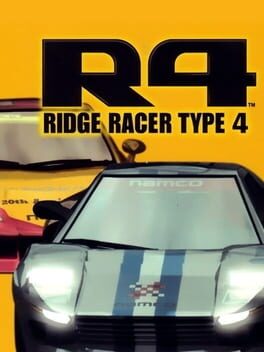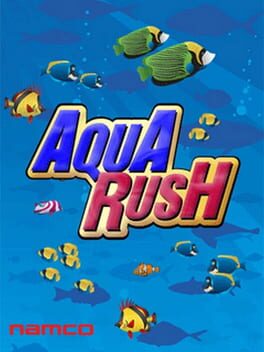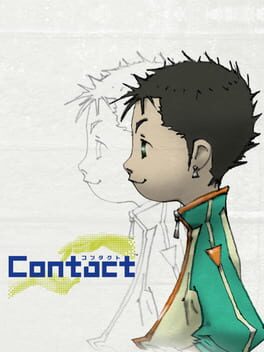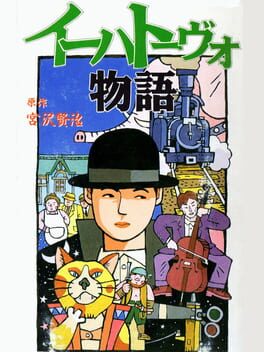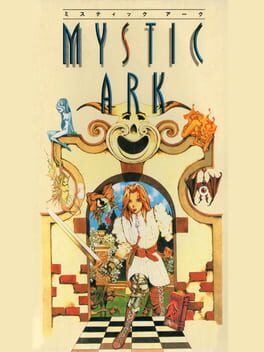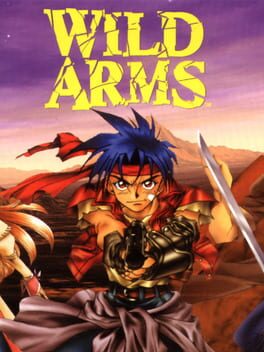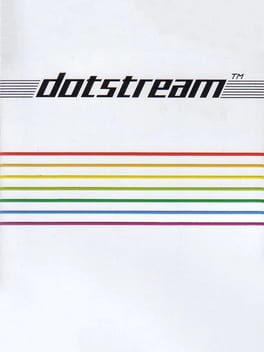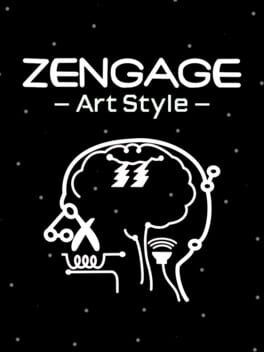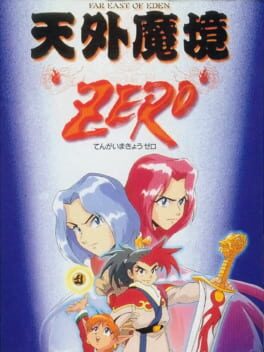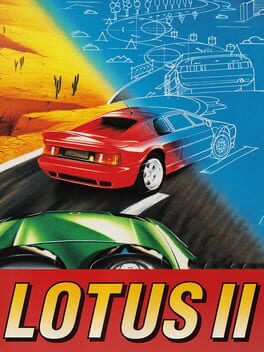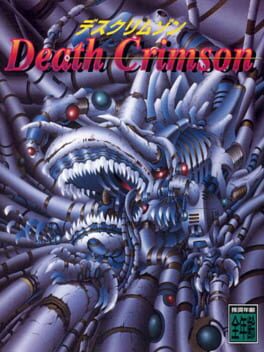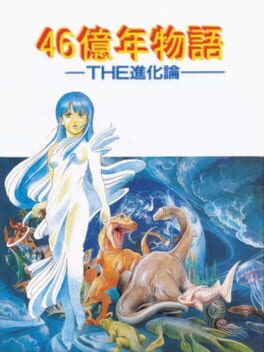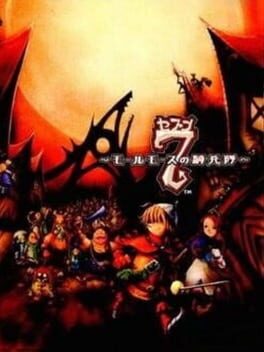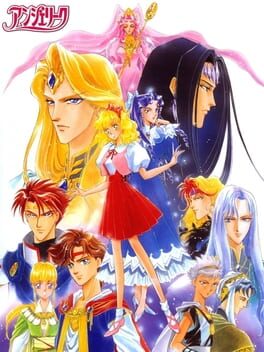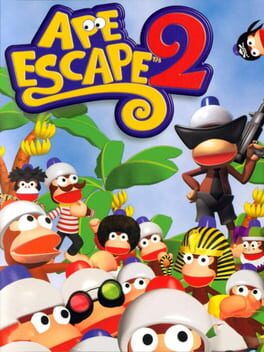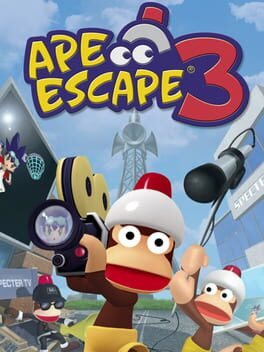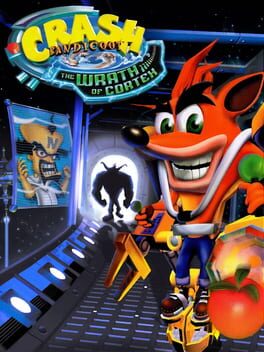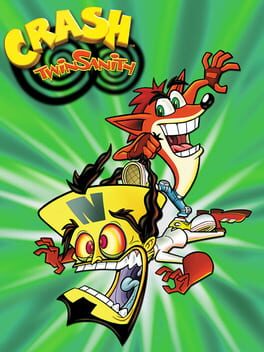JetWolfEX
BACKER
26 reviews liked by JetWolfEX
Terranigma
1995
Been dealing with some health problems lately so I'm too sick to work on my own projects but instead have a lot of time for bucket list games. Can't complain (too much).
Terranigma is one of the several "good vibes" SNES games. Others include Chrono Trigger, Soul Blazer, Secret of Evermore, EVO... probably more. But they're the best type of nostalgia imo. Only a few other PS1 games come close to that feel. Can't really describe what that feel actually is, but if you know you know I'd say.
I've tried beating Terranigma twice, but I lost interest about halfway once and the other I think I got stuck on Bloody Mary (that's the boss that everyone complains about so I think that was probably it).
This game is beautiful though. Graphics and music is absolute top notch for the system. Might even be my favorite at times. I don't mind being sick so much if I have Ark as company.
Terranigma is one of the several "good vibes" SNES games. Others include Chrono Trigger, Soul Blazer, Secret of Evermore, EVO... probably more. But they're the best type of nostalgia imo. Only a few other PS1 games come close to that feel. Can't really describe what that feel actually is, but if you know you know I'd say.
I've tried beating Terranigma twice, but I lost interest about halfway once and the other I think I got stuck on Bloody Mary (that's the boss that everyone complains about so I think that was probably it).
This game is beautiful though. Graphics and music is absolute top notch for the system. Might even be my favorite at times. I don't mind being sick so much if I have Ark as company.
Radiant Silvergun
1998
Radiant Silvergun, like it's close cousin Alien Soldier, (another of my all-time favorite games) is what I call a solution-shooter; which is to say, it playfully hides a "correct" playstyle for a boss, or a level, or even a singular piece of a level, behind a slew of various weapon options and possible pathways and approaches. There are many different WORKABLE ways to play, and to defeat bosses, to be sure... but there is almost always, I have found, an EASIEST way--such that, if you study, then uncover, and then string together all of the Easiest Ways through the entire game, it would transform a seemingly impossible, WRETCHEDLY-difficult experience into a surprisingly simply completable one.
For a very primitive example: sure, you could try and grit your way through a boss encounter dodging everything on the bottom of the screen, utilizing your straight-ahead cannon for maximum damage, as though it were a CAVE shmup... but have you tried swooping around and to the left (out of the way, perhaps, of most of the bullet-hell), and utilizing your side-shot instead?
It's this simple mechanism that not only keeps Radiant Silvergun from becoming frustrating, but that makes it feel so awash in fascinating possibility. Like a Soulsborne game, it sheds layers of difficulty upon every death and continue, not because you got better at twitch movement (but, hey, maybe you did), but because you learned stuff that will legitimately help you the next time--and not just simple bullet patterns, but the effectiveness of different combinations of weapons, the value of an offensive or defensive strategy (like Ikaruga, the entire game can be beaten without firing a shot), and much more.
This style of gameplay necessitates countless trial and error runs, which never feel grindy because, again, you're not just attempting to get 'gud' at the game (that is to say, to master its core movement and shooting mechanics); you're attempting to gain knowledge about its design. For this reason, the optimal way to play Radiant Silvergun initially is in a Saturn emulator, utilizing savestates to study every individual encounter. Treasure knew this, and so, while they didn't provide the ability to literally save one's state, they did thankfully include a stage select in the Saturn port that breaks the game up into 20-30 minute chunks. (That anyone could have learned this game in the arcade is mind-boggling.)
I completely understand complaints about the difficulty. The final gauntlet of bosses, especially, is almost hilariously grueling, even after many studious playthroughs. But that's extremely important to the other, major thing Radiant Silvergun has going for it over almost any other shmup that I've played: meaningful narrative stakes.
There's a story here. There's symbolism; there's camaraderie, and sacrifice, and redemption. There's the entire world to save, and the game makes us FEEL that, with a huge orchestral score, and movie-quality voice acting. When bosses are raining hellfire on you toward the end of the game, and you desperately wonder how you'll ever make it, you're doing so in tandem with the game's characters in its story, which feels insanely unique in a shmup, even all these years later.
(If you find the game too difficult to enjoy, I would honestly recommend just watching a Let's Play as though it were a movie, and basking in the sheer visual- and design-audacity of some of these fucking boss fights (ESPECIALLY Xiga)).
As I did with Alien Soldier, I'm putting a 1CC of Radiant Silvergun on my bucket list. It's a game that I'll happily return to, over and over, to find just one more of those Easiest Ways--a new nook away from the bullets, a new weapon strategy, a new ship path, a new boss weakness. I could watch experts and just attempt to mimic them, of course, but to do so would be to miss the entire point, and the ultimate beauty, of this game.
For a very primitive example: sure, you could try and grit your way through a boss encounter dodging everything on the bottom of the screen, utilizing your straight-ahead cannon for maximum damage, as though it were a CAVE shmup... but have you tried swooping around and to the left (out of the way, perhaps, of most of the bullet-hell), and utilizing your side-shot instead?
It's this simple mechanism that not only keeps Radiant Silvergun from becoming frustrating, but that makes it feel so awash in fascinating possibility. Like a Soulsborne game, it sheds layers of difficulty upon every death and continue, not because you got better at twitch movement (but, hey, maybe you did), but because you learned stuff that will legitimately help you the next time--and not just simple bullet patterns, but the effectiveness of different combinations of weapons, the value of an offensive or defensive strategy (like Ikaruga, the entire game can be beaten without firing a shot), and much more.
This style of gameplay necessitates countless trial and error runs, which never feel grindy because, again, you're not just attempting to get 'gud' at the game (that is to say, to master its core movement and shooting mechanics); you're attempting to gain knowledge about its design. For this reason, the optimal way to play Radiant Silvergun initially is in a Saturn emulator, utilizing savestates to study every individual encounter. Treasure knew this, and so, while they didn't provide the ability to literally save one's state, they did thankfully include a stage select in the Saturn port that breaks the game up into 20-30 minute chunks. (That anyone could have learned this game in the arcade is mind-boggling.)
I completely understand complaints about the difficulty. The final gauntlet of bosses, especially, is almost hilariously grueling, even after many studious playthroughs. But that's extremely important to the other, major thing Radiant Silvergun has going for it over almost any other shmup that I've played: meaningful narrative stakes.
There's a story here. There's symbolism; there's camaraderie, and sacrifice, and redemption. There's the entire world to save, and the game makes us FEEL that, with a huge orchestral score, and movie-quality voice acting. When bosses are raining hellfire on you toward the end of the game, and you desperately wonder how you'll ever make it, you're doing so in tandem with the game's characters in its story, which feels insanely unique in a shmup, even all these years later.
(If you find the game too difficult to enjoy, I would honestly recommend just watching a Let's Play as though it were a movie, and basking in the sheer visual- and design-audacity of some of these fucking boss fights (ESPECIALLY Xiga)).
As I did with Alien Soldier, I'm putting a 1CC of Radiant Silvergun on my bucket list. It's a game that I'll happily return to, over and over, to find just one more of those Easiest Ways--a new nook away from the bullets, a new weapon strategy, a new ship path, a new boss weakness. I could watch experts and just attempt to mimic them, of course, but to do so would be to miss the entire point, and the ultimate beauty, of this game.
Joy Mech Fight
1993
You’re trying to tell me these are mechs? They look like potential rayman characters
One of the last games released for the famicom during the shift to the super famicom in Japan, joy mech fight was nintendo’s last attempt to create a fighting game for the famicom (like what they did with urban champion). This game was actually never brought to the west until Nintendo switch online a year ago so uhh…good job Nintendo. Good to see the game finally got a localisation! Oh wait-
So because I can’t read what’s going on, I’m currently going off of what it says on the Wikipedia page. Dr. Emon and Dr. Walnuts create these really cool robots until walnuts steals them and plans world domination. Thankfully, Emon brings a robot called sukapon and turns him into a military robot to fight back against Walnuts and all his robots. Pretty simple plot.
Gameplay is your typical fighting game, though it has quite a lot of charm to it. In the story mode, you eventually get 36 available fighters, each with their own abilities that you can use. These can also be played in the multiplayer modes, and some are extremely easy to master. The story mode consists of beating 7 fighters per level until having to face a boss at the end. After finishing the boss, you move onto the next level.
Overall, whilst not the best game on the famicom, I must admit that joy mech fight has a really nice charm to it. And as one of the last famicom games, it has a really nice presentation that I love and it doesn’t feel stiff at all. It is probably one of the best fighting games on the famicom, but whether it is on a similar level to that of street fighter 2 or tekken is possibly a very big stretch.
Fun gameplay, really nice presentation, neat music, rayman if it was a fighting game
One of the last games released for the famicom during the shift to the super famicom in Japan, joy mech fight was nintendo’s last attempt to create a fighting game for the famicom (like what they did with urban champion). This game was actually never brought to the west until Nintendo switch online a year ago so uhh…good job Nintendo. Good to see the game finally got a localisation! Oh wait-
So because I can’t read what’s going on, I’m currently going off of what it says on the Wikipedia page. Dr. Emon and Dr. Walnuts create these really cool robots until walnuts steals them and plans world domination. Thankfully, Emon brings a robot called sukapon and turns him into a military robot to fight back against Walnuts and all his robots. Pretty simple plot.
Gameplay is your typical fighting game, though it has quite a lot of charm to it. In the story mode, you eventually get 36 available fighters, each with their own abilities that you can use. These can also be played in the multiplayer modes, and some are extremely easy to master. The story mode consists of beating 7 fighters per level until having to face a boss at the end. After finishing the boss, you move onto the next level.
Overall, whilst not the best game on the famicom, I must admit that joy mech fight has a really nice charm to it. And as one of the last famicom games, it has a really nice presentation that I love and it doesn’t feel stiff at all. It is probably one of the best fighting games on the famicom, but whether it is on a similar level to that of street fighter 2 or tekken is possibly a very big stretch.
Fun gameplay, really nice presentation, neat music, rayman if it was a fighting game
Wagyan Paradise
1994
even through the tedium that was trial-and-erroring the educational minigames (hard to play games about knowing a language you don't know), the game had a lot of charm~! the presentation is /phenomenal/, and was honestly enough to carry the rest of the game on its own, but the level design and mechanics, while not shining quite as brightly, still held up well.
the game is also really generous, having infinite continues, which i appreciated as i died a lot (even though it's really not that difficult... i guess i suck at platformers, despite loving 'em!)
...
right after writing this, i played through the game again using the passwords on gamefaqs to skip the minigames and dang, this game is breazy! it also has some /real/ good color palettes.
the game is also really generous, having infinite continues, which i appreciated as i died a lot (even though it's really not that difficult... i guess i suck at platformers, despite loving 'em!)
...
right after writing this, i played through the game again using the passwords on gamefaqs to skip the minigames and dang, this game is breazy! it also has some /real/ good color palettes.
Metal Black
1991
Cry for the moon...
Entering the infinite void of what's beyond the thermosphere of our planet, we gaze upon her majesty. That moment we take in the supposed sanctuary of our mother goddess is where our unknowable enemy launches their sneaky surprise attack at the start of the round, we don't even notice there's two moons until it's too late. The imposter of our beautiful rock in the sky slowly approaches from the background as warning sirens blare through your speakers. I hope you're prepared fellow pilot, because it's only downhill from here when it comes to questioning what lies in front of your eyes.
The mechanics of your ship are shoddy and experimental at best, just as rough and rugged as the scenery you'll be digesting in your next trip through your shmup smorgasbord. The unknowable enemy will not make things easy with their positioning and method of approach, and your ship may be ill-equipped to deal with their lunacy and onslaught of Space Mambos. Persevere through it all and your Black Fly getting inevitably crushed and sandwiched between the ceiling and floor by a funny rascal, and you may just find yourself in a fight against a phantom phallus utilizing your own kind's history and imagery of what may be your childhood pet cat to drag you deeper into it's method of madness.
Once all is said and done, you will be led to wonder, were you dreaming or was it reality? Perhaps it's time to wake up...you were born to be free....
Wake up.
Entering the infinite void of what's beyond the thermosphere of our planet, we gaze upon her majesty. That moment we take in the supposed sanctuary of our mother goddess is where our unknowable enemy launches their sneaky surprise attack at the start of the round, we don't even notice there's two moons until it's too late. The imposter of our beautiful rock in the sky slowly approaches from the background as warning sirens blare through your speakers. I hope you're prepared fellow pilot, because it's only downhill from here when it comes to questioning what lies in front of your eyes.
The mechanics of your ship are shoddy and experimental at best, just as rough and rugged as the scenery you'll be digesting in your next trip through your shmup smorgasbord. The unknowable enemy will not make things easy with their positioning and method of approach, and your ship may be ill-equipped to deal with their lunacy and onslaught of Space Mambos. Persevere through it all and your Black Fly getting inevitably crushed and sandwiched between the ceiling and floor by a funny rascal, and you may just find yourself in a fight against a phantom phallus utilizing your own kind's history and imagery of what may be your childhood pet cat to drag you deeper into it's method of madness.
Once all is said and done, you will be led to wonder, were you dreaming or was it reality? Perhaps it's time to wake up...you were born to be free....
Wake up.
Wild Guns Reloaded
2016
You know, the original Wild Guns was pretty alright, but you know what it was missing this whole time?... A DOGGO!
I don't think that saying the original game was pretty stellar would be a hot take; Wild Guns is a pretty damn fun and interesting take on shooting galleries, combining them with the platforming genre and delivering an outstanding visual style and setting —I've always had a weakness for the idea of robots and giant floating ships in the Wild West, and this game takes insporation from all kinds of works based on that idea— resulting in a game that the only reason I haven't ever returned to it being because I'm terrible at it.
While I can't think of anything particularly wrong with it, I wouldn't have complaint if some things were done differently; the lack of any kind of save feature, while making it very much in line with the arcade experiences it draws inspiration from and it isn't a lengthy experience by any chance, it would have still been welcomed, such as more mini-boss variety or a bit of re-tooling on the already present big bads. I didn’t know much about Reloaded going into it, but I thought it would be basically that; a retake that takes the chance to update and change some aspects, keeping the core the same while modifying and altering parts of the original experience, like so many remakes do. But... no, Wild Guns Reloaded keeps the experience the exact same, only adding to what was already there, and it honestly feels as if this was the game they wanted to make back in 1994.
Why do I say that? Well, Bullet is in it for one, but even setting aside that big and clear improvement, every other aspect that was in the original experience is brought to its best possible limit. The first game was already pretty, Reloaded is outright majestic: the pixel art is so detailed and perfected for both enemies and the stages themselves that the fact it still feels like the original artwork is honestly remarkable. The SNES game is still amazing to look that even to this day, but here I truly get the feeling I’m playing a forgotten real Arcade version; no big changes were made, nor was anything lost in the 22-year leap. Same sentiment goes towards the OST, I still LOVE how the original sounds, but the new remixes are takes that I also enjoy quite a bit. I don’t think that Reloaded puts these aspects of its predecessor to shame, but it’s a pretty worthy upgrade and accomplished what it was probably going for, the feeling that this could have been on a cabinet alongside the likes of Metal Slug back in the 90s.
In every other sense, this is quite literally Wild Guns... but more of it! Brand new secret stages, enemies and themes are already wonderful additions, but also having Doris and The Best Character in Gaming to add 4-player-multiplayer is one of those changes that wasn’t necessary at all but incentivizes replayability even more: Doris is an interesting character to play as, much more methodical but an absolute powerhouse if you manage it right, even tho it never clicked with me, I can totally see how useful it can be solo or with other players... and then there’s Bullet. Clint and Annie are fun to play, they are the original pair and they feel perfectly adequate to this curious style of gameplay, Bullet is the odd one out, and yet I prefer him so much more: were the other two sacrifice movility for the shake of more precise shooting, Bullet is te opposite, only being to auto aim in a sepcific part once the button is held down, but you are completely free to move while you do it. I adore this more agressive way of approaching stages and even if it can take a bit to grow accostumed, I find it so rewarding, there’s a reason I praised it even before getting to him, beating Kid’s ass never felt better.
Even more jaw-dropping visuals, more stuff to test and have fun with, same great game as always, and a nice puppy; calling Wild Guns Reloaded a ‘’remaster’’ feels like trowing out the sheer effort and work it was put into replicating the original and going even further than one. Still, I don’t see Reloaded as a replacement, but it’s a fantastic option to have nonetheless, is the same fun time after all, just flashier and with more to discover...
Big thanks to @DeltaWDunn for recommending it to me! I’ll be honest and say that before it was brought into my attention, I didn’t even know this game existed, but I’m so glad someone pointed me to it, so once again, huge thanks!
I don't think that saying the original game was pretty stellar would be a hot take; Wild Guns is a pretty damn fun and interesting take on shooting galleries, combining them with the platforming genre and delivering an outstanding visual style and setting —I've always had a weakness for the idea of robots and giant floating ships in the Wild West, and this game takes insporation from all kinds of works based on that idea— resulting in a game that the only reason I haven't ever returned to it being because I'm terrible at it.
While I can't think of anything particularly wrong with it, I wouldn't have complaint if some things were done differently; the lack of any kind of save feature, while making it very much in line with the arcade experiences it draws inspiration from and it isn't a lengthy experience by any chance, it would have still been welcomed, such as more mini-boss variety or a bit of re-tooling on the already present big bads. I didn’t know much about Reloaded going into it, but I thought it would be basically that; a retake that takes the chance to update and change some aspects, keeping the core the same while modifying and altering parts of the original experience, like so many remakes do. But... no, Wild Guns Reloaded keeps the experience the exact same, only adding to what was already there, and it honestly feels as if this was the game they wanted to make back in 1994.
Why do I say that? Well, Bullet is in it for one, but even setting aside that big and clear improvement, every other aspect that was in the original experience is brought to its best possible limit. The first game was already pretty, Reloaded is outright majestic: the pixel art is so detailed and perfected for both enemies and the stages themselves that the fact it still feels like the original artwork is honestly remarkable. The SNES game is still amazing to look that even to this day, but here I truly get the feeling I’m playing a forgotten real Arcade version; no big changes were made, nor was anything lost in the 22-year leap. Same sentiment goes towards the OST, I still LOVE how the original sounds, but the new remixes are takes that I also enjoy quite a bit. I don’t think that Reloaded puts these aspects of its predecessor to shame, but it’s a pretty worthy upgrade and accomplished what it was probably going for, the feeling that this could have been on a cabinet alongside the likes of Metal Slug back in the 90s.
In every other sense, this is quite literally Wild Guns... but more of it! Brand new secret stages, enemies and themes are already wonderful additions, but also having Doris and The Best Character in Gaming to add 4-player-multiplayer is one of those changes that wasn’t necessary at all but incentivizes replayability even more: Doris is an interesting character to play as, much more methodical but an absolute powerhouse if you manage it right, even tho it never clicked with me, I can totally see how useful it can be solo or with other players... and then there’s Bullet. Clint and Annie are fun to play, they are the original pair and they feel perfectly adequate to this curious style of gameplay, Bullet is the odd one out, and yet I prefer him so much more: were the other two sacrifice movility for the shake of more precise shooting, Bullet is te opposite, only being to auto aim in a sepcific part once the button is held down, but you are completely free to move while you do it. I adore this more agressive way of approaching stages and even if it can take a bit to grow accostumed, I find it so rewarding, there’s a reason I praised it even before getting to him, beating Kid’s ass never felt better.
Even more jaw-dropping visuals, more stuff to test and have fun with, same great game as always, and a nice puppy; calling Wild Guns Reloaded a ‘’remaster’’ feels like trowing out the sheer effort and work it was put into replicating the original and going even further than one. Still, I don’t see Reloaded as a replacement, but it’s a fantastic option to have nonetheless, is the same fun time after all, just flashier and with more to discover...
Big thanks to @DeltaWDunn for recommending it to me! I’ll be honest and say that before it was brought into my attention, I didn’t even know this game existed, but I’m so glad someone pointed me to it, so once again, huge thanks!
S.T.G: Strike Gunner
1991
Total dearth of anything to engage with, completely disrespected my time and energy. I guess I could be charitable and say the game is functionally sound and feels like a shmup should, and the 15 supporting weapons to select from are neat, but there's nothing going on in this game, there's no level design, half the bosses die from 1 bomb and the other half take 100,000 (no exaggeration) shots to the head. How do you make something like this? Debatably even worse than D-Force on sheer artistic merit
Equinox
1993
Software Creations supposedly began work on Equinox in March 1990, being the first Western developer to gain access to a SNES devkit. The game wasn't completed for another three years, reportedly at least partially due to visual bugs, and even in the final product you can still see glimpses of flickering and incorrect overlapping. Not only that, but there are weird glitches that can happen for unknown reasons that may lead to soft resets. The damn thing is barely holding itself together, and it nearly collapses under its ambitions alone even without the technical issues in mind.
Yet, in spite of all that, I mostly enjoyed myself. It definitely got a bit exhausting towards the end of its eight hour runtime as the dungeons became more and more massive, but it starts off surprisingly strong and still manages to keep things going acceptably throughout. My favorite aspect is probably the ambient soundtrack by the Follins, which I never found myself getting tired of throughout the entire game. Wasn't always a fan of the way the game looked, especially not that grimace Glendaal makes every time he dies, but there are some very pretty areas such as Quagmire and Atlena during the midgame. It reminds me a lot of Landstalker in that aspect - not just that they're both isometric action RPGs, but they're both kind of ugly for the most part yet still endearing. I'm not sure which I prefer.
The puzzles aren't so great either once you reach a certain point, mostly consisting of weird optical illusions and other sorts of perspective fuckery. An interview from 1994 mentions that 3D shadowing to allow for better depth perception wasn't really possible at the time, possibly indicating that a lot of these types of rooms were meant to be clearer than they really are. Hitboxes can also be pretty frustrating, especially with spikes, and I found that none of the bosses were very engaging. Combined with how long the game is, it seems like the negatives should outweigh the positives, but such is thankfully not the case for me this time.
Equinox is definitely more of a 'vibes game' than something I'd really entertain the thought of revisiting, but I had a pretty decent time regardless. Not very descriptive, of course, but surely it makes sense. The soothing soundtrack and smaller emphasis on combat really do wonders to the feel of the whole thing, despite the aggravating difficulty later on. I would definitely recommend this if you're super into Landstalker or Light Crusader. I don't know if it's necessarily better than those, and it's certainly a little janky, but it's worth a look if you're in that crowd.
Yet, in spite of all that, I mostly enjoyed myself. It definitely got a bit exhausting towards the end of its eight hour runtime as the dungeons became more and more massive, but it starts off surprisingly strong and still manages to keep things going acceptably throughout. My favorite aspect is probably the ambient soundtrack by the Follins, which I never found myself getting tired of throughout the entire game. Wasn't always a fan of the way the game looked, especially not that grimace Glendaal makes every time he dies, but there are some very pretty areas such as Quagmire and Atlena during the midgame. It reminds me a lot of Landstalker in that aspect - not just that they're both isometric action RPGs, but they're both kind of ugly for the most part yet still endearing. I'm not sure which I prefer.
The puzzles aren't so great either once you reach a certain point, mostly consisting of weird optical illusions and other sorts of perspective fuckery. An interview from 1994 mentions that 3D shadowing to allow for better depth perception wasn't really possible at the time, possibly indicating that a lot of these types of rooms were meant to be clearer than they really are. Hitboxes can also be pretty frustrating, especially with spikes, and I found that none of the bosses were very engaging. Combined with how long the game is, it seems like the negatives should outweigh the positives, but such is thankfully not the case for me this time.
Equinox is definitely more of a 'vibes game' than something I'd really entertain the thought of revisiting, but I had a pretty decent time regardless. Not very descriptive, of course, but surely it makes sense. The soothing soundtrack and smaller emphasis on combat really do wonders to the feel of the whole thing, despite the aggravating difficulty later on. I would definitely recommend this if you're super into Landstalker or Light Crusader. I don't know if it's necessarily better than those, and it's certainly a little janky, but it's worth a look if you're in that crowd.
R-Type II
1989
Okay look, I can spin all sorts of shit into something being actually good, but I just can't do it here. R-Type II as far as it's original arcade incarnation is concerned is borderline unplayable. Absolutely reprehensible morally unsound difficulty that I would expect from loop 2 gameplay. Gradius III at least gave me some hospitality before it caved my skull in. R-Type II is exceptionally rude in comparison.
You can talk as much smack as you want about Super R-Type's slowdown and lack of checkpoints, but they remixed and added stages for the better in that port/not-port of this. I also couldn't help but think the stronger charged shot was harder to use here than in Super, so all around I'm just yearning for my childhood back instead of this hellhole I found myself in when I dared to play the second half of R-Types today. I regret everything, you owe me for this R-Type!
Give me my slowdown back, give me what I want! Give me the good music too! Give me what I want!
You can talk as much smack as you want about Super R-Type's slowdown and lack of checkpoints, but they remixed and added stages for the better in that port/not-port of this. I also couldn't help but think the stronger charged shot was harder to use here than in Super, so all around I'm just yearning for my childhood back instead of this hellhole I found myself in when I dared to play the second half of R-Types today. I regret everything, you owe me for this R-Type!
Give me my slowdown back, give me what I want! Give me the good music too! Give me what I want!
Super Mario RPG
2023
There's definitely a vibe to Super Mario RPG. This isn't nostalgia talking. I didn't play the game until 2017, on the SNES Mini. But the music, the writing, the sequence of tasks you have to perform... this is the game Squaresoft made when they thought Final Fantasy VII was going to be an N64 project. It's a silly, kid-friendly fairytale RPG, but there's a real through line from this to both Final Fantasy VII and Ocarina of Time. It's not that games don't make us feel like they used to when we kids. They just stopped making them like this.
So much of what I love about Mario RPG is in its presentation. It was a real technical achievement on the SNES, but that meant it was pushing against boundaries in every direction. I mean, really, this was an isometric RPG with pre-rendered graphics and a very prominent jump button, and that was about as 3D as you were getting in an adventure game back then. Characters had very limited poses to communicate with, and they opted to keep Mario mute as he gave direct responses to NPCs, expressing himself through pantomime and, again, his trademark jumping. It's a bit of a puppet show, and it's deeply endearing.
Removing the limitations of an old game is always hazardous, and particularly when that carries so much of its appeal. New developers, ArtePiazza, have earned Square Enix's trust from decades of ports and remakes, spanning all the way back to the Super Famicom version of Dragon Quest III, and they've taken great pains to stay faithful to the original game's charm, though you can feel the stress they were under, taking Zoom meetings with Shigeru Miyamoto and Tetsuya Nomura. Playing this game is accepting that it's going to look like a Fancy Modern version, discarding the funny old sprites, and past that, there's very little for the old guard to grumble about. Hell, the bulk of the characters still look like beautifully crude old CGI.
There's a suite of quality of life tweaks that take much of the old SNES RPG pain out of the experience. Downed characters can be swapped mid-battle, timing-based attacks now give a little heads up to help you figure out when you're supposed to press A, and the game's constantly auto-saving. It's less of a commitment. Yes, I like the tension that comes from not knowing when you'll be allowed to turn a game off, but I was still using save states when I played on the SNES Mini. I'm not kidding on that we had it better off in the nineties.
I really don't know what younger audiences will make of this, though. Seeing copies sitting on the shelves of Smyths Toys, with the no-nonsense "MARIO RPG" title and stark box art, it doesn't come with a disclaimer that says "THIS CONTROLS A BIT LIKE LANDSTALKER". If you're not already well versed in 16-Bit games, the game could feel really stiff and awkward. This is a game before there was a consensus on what Mario sounded like. Are kids going to understand why he's not whooping and exclaiming with every jump? Let's face facts. People who have first-hand experience of the 1996 release line-up are fucking old now. Most people buying Mario games aren't us. Are they going to understand? And if not, why doesn't Princess Peach look like the crude assembly of geometric shapes that she did on the SNES? There's concessions made for the modern perception of the Mario brand here, and they really clash against the eight-way movement system and silent text boxes. I think it's a real downer that they couldn't fully commit to the bit.
There's new FMV cutscenes that mimic the movement and animation of the original. I'm sure there's a certain kind of player who will see these and gasp in awe. They're not me, though. I don't think they're anywhere near as charming when freed of the static perspective. Again, this isn't a game that I've had a long relationship with. If I'd played the game at a more impressionable age, and fantasised about a more tangible version of its world, maybe it would have done something for me. I just like the old approach more.
So, it's bittersweet in all. A compromise. A better-playing version of a game I really like, but a version I like less overall. When I next want to play Mario RPG, I honestly don't know whether I'll play this or the SNES version. In all likelihood, I'll grumble about the indecision and play something else altogether. That's a shame. The game's really good, I like it a lot, and I respect the people who worked on this new version. If you want to play Mario RPG, I think the Switch release is the much more reasonable recommendation. But if you're like me, and you admire what developers were able to achieve on more rudimentary hardware, and the amusing, lovable games all those limitations lead to, I think you know that you'd be denying yourself something for the sake of convenience.
Never mind me, though. I'm a nut. Go have fun.
So much of what I love about Mario RPG is in its presentation. It was a real technical achievement on the SNES, but that meant it was pushing against boundaries in every direction. I mean, really, this was an isometric RPG with pre-rendered graphics and a very prominent jump button, and that was about as 3D as you were getting in an adventure game back then. Characters had very limited poses to communicate with, and they opted to keep Mario mute as he gave direct responses to NPCs, expressing himself through pantomime and, again, his trademark jumping. It's a bit of a puppet show, and it's deeply endearing.
Removing the limitations of an old game is always hazardous, and particularly when that carries so much of its appeal. New developers, ArtePiazza, have earned Square Enix's trust from decades of ports and remakes, spanning all the way back to the Super Famicom version of Dragon Quest III, and they've taken great pains to stay faithful to the original game's charm, though you can feel the stress they were under, taking Zoom meetings with Shigeru Miyamoto and Tetsuya Nomura. Playing this game is accepting that it's going to look like a Fancy Modern version, discarding the funny old sprites, and past that, there's very little for the old guard to grumble about. Hell, the bulk of the characters still look like beautifully crude old CGI.
There's a suite of quality of life tweaks that take much of the old SNES RPG pain out of the experience. Downed characters can be swapped mid-battle, timing-based attacks now give a little heads up to help you figure out when you're supposed to press A, and the game's constantly auto-saving. It's less of a commitment. Yes, I like the tension that comes from not knowing when you'll be allowed to turn a game off, but I was still using save states when I played on the SNES Mini. I'm not kidding on that we had it better off in the nineties.
I really don't know what younger audiences will make of this, though. Seeing copies sitting on the shelves of Smyths Toys, with the no-nonsense "MARIO RPG" title and stark box art, it doesn't come with a disclaimer that says "THIS CONTROLS A BIT LIKE LANDSTALKER". If you're not already well versed in 16-Bit games, the game could feel really stiff and awkward. This is a game before there was a consensus on what Mario sounded like. Are kids going to understand why he's not whooping and exclaiming with every jump? Let's face facts. People who have first-hand experience of the 1996 release line-up are fucking old now. Most people buying Mario games aren't us. Are they going to understand? And if not, why doesn't Princess Peach look like the crude assembly of geometric shapes that she did on the SNES? There's concessions made for the modern perception of the Mario brand here, and they really clash against the eight-way movement system and silent text boxes. I think it's a real downer that they couldn't fully commit to the bit.
There's new FMV cutscenes that mimic the movement and animation of the original. I'm sure there's a certain kind of player who will see these and gasp in awe. They're not me, though. I don't think they're anywhere near as charming when freed of the static perspective. Again, this isn't a game that I've had a long relationship with. If I'd played the game at a more impressionable age, and fantasised about a more tangible version of its world, maybe it would have done something for me. I just like the old approach more.
So, it's bittersweet in all. A compromise. A better-playing version of a game I really like, but a version I like less overall. When I next want to play Mario RPG, I honestly don't know whether I'll play this or the SNES version. In all likelihood, I'll grumble about the indecision and play something else altogether. That's a shame. The game's really good, I like it a lot, and I respect the people who worked on this new version. If you want to play Mario RPG, I think the Switch release is the much more reasonable recommendation. But if you're like me, and you admire what developers were able to achieve on more rudimentary hardware, and the amusing, lovable games all those limitations lead to, I think you know that you'd be denying yourself something for the sake of convenience.
Never mind me, though. I'm a nut. Go have fun.
7 lists liked by JetWolfEX
by JordanResin |
35 Games
by Drax |
25 Games
by NoJoTo |
85 Games
by Funbil |
19 Games
by Detchibe |
132 Games
by abri |
250 Games
by BrightGalaxy |
41 Games
